Esthetic Lens
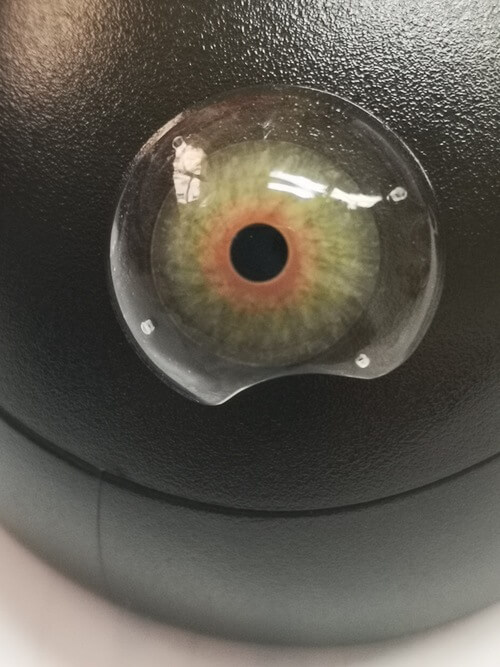
Prosthetic or cosmetic contact lens.
Prosthetic contact lenses are used to equip corneas traumatized or having a modified aesthetic appearance:
- Iris disfigured or deformed.
- Pupil disfigured or deformed.
- Corneal scar following an accident or illness.
- Aniridia.
- Coloboma.
- Albinism Photophobia.
Cosmetic contact lenses are used to modify the aesthetic color of the eye and change the appearance of the eyes.
Prosthetic lenses
Equipping a patient with a therapeutic aesthetic lens may seem comparable to any adaptation with contact lenses. But in addition to this type of equipment, there is patient suffering and discomfort. The psychological approach is therefore very different from a classic adaptation.
Through a few examples, we will offer you different types of prosthetic equipment.
The fitting of a prosthetic lens will concern a number of pathologies or anomalies such as:
- Corneal anomalies: gerontoxon, leucoma, post-traumatic irregularities, scars, wounds, keratopathy in strips ...
- Iris or pupil abnormalities: aniridia, albinism, heterochromia, iridectomy, coloboma, Adie pupil, anisocoria, mydriasis ...
- Anomalies of the lens: aphakia and pseudophakia with photophobia, subluxation, inoperable cataract ...
- Eye muscle abnormalities: mono or binocular diplopia, strabismus, etc.
- Sensory abnormalities: amblyopia ...
- Anomalies of the globe: microphthalmia, enophthalmos, buphthalmos, phthyse ...
- The desire of certain athletes or patients deficient in color vision who wish to improve their visual performance through colored lenses ...
Lens with black pupil and transparent iris (Image 1)
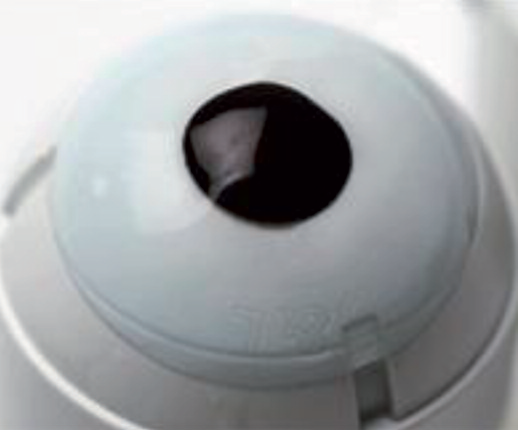
In the following cases: non-operable cataract, diplopia ..., it is possible to equip these eyes with a transparent lens with only a black pupil (opaque) in order to mask or obstruct the vision. It is simple and inexpensive equipment for the wearer.
Case #1 is complicated by an inoperable cataract and a clearly visible white pupil.
We were able to provide him with a flexible high hydrophilic lens with a black pupil (not opaque). The pupil diameter is chosen large enough to avoid seeing the cataract below with a slightly mobile lens or an off-center apex.
Translucent brown colored lens, optical pupil or black pupil (Image 2 and 3)
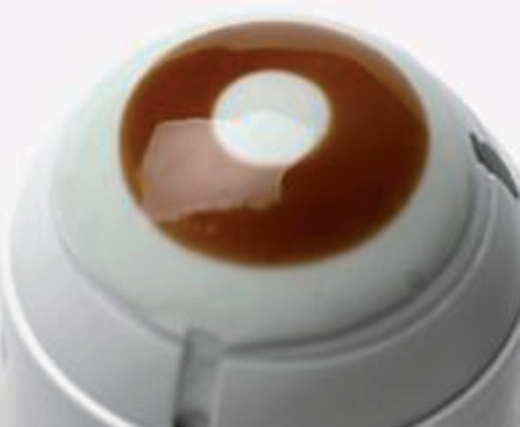
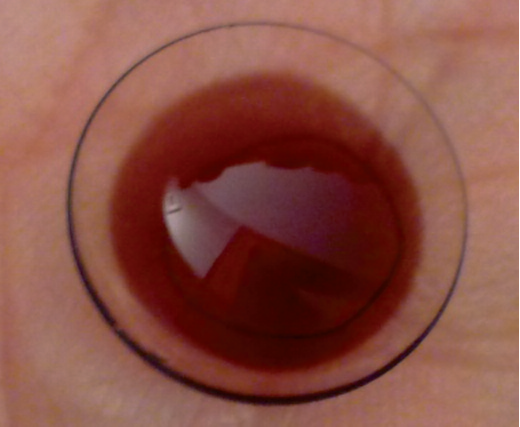
In cases of light or dark brown colored irises, we prefer as a first step towards a colored lens in shades of brown (with different intensities available) before opting for a hand painted iris lens.
It is indeed a fairly thin lens with a partially transparent iris that lets light through and will give a brighter appearance to the diseased eye. Indeed, the final color results from the superposition of the colored lens and the wearer's cornea (white, bluish, with a pillowcase, limestone, etc.). The lens is easily reproducible and very well tolerated. It is also ideal for glare.
Case #2 has blind eye microphthalmos associated with mild convergent strabismus and a small ptosis.
This is first-time equipment for a young girl.
We have chosen a 50% brown colored soft lens so as to mask the sclera visible under the lens and adapt the iris diameter of the adelphe eye. We did not voluntarily choose to put a black pupil that would have more prominently and accentuated his strabismus. Again, this is a soft, highly hydrophilic, well-tolerated lens.
In this specific case, more sophisticated equipment with a painted iris lens and scleral skirt could give an even better result, but it is still too early to present it and offer it to parents.
The use of a strong positive lens would help increase the palpebral opening, without necessarily having to resort to a prosthetic scleral lens immediately.
Soft lens with painted iris with optical pupil or black pupil (Image 4)
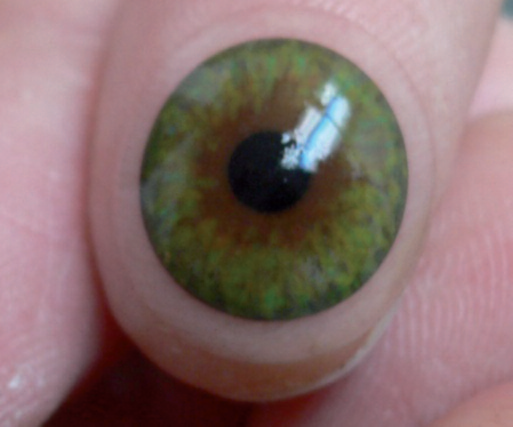
As with the previous equipment, it is possible to mask the deviation with a non-translucent lens with painted iris and scleral skirt associated with a prism and / or truncation to counter the rotation of the lens.
| Hydrophilic lens with painted iris and black pupil (Esthécolor: radius: 6.50 to 9.60mm, diameter: 11.00 to 17.00mm, power: +20.00 to -20.00D). | 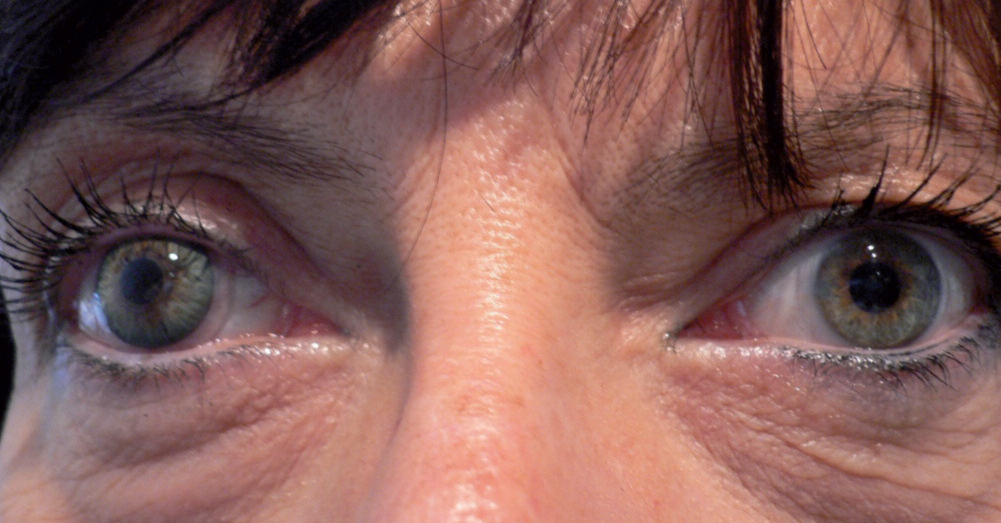 |
Esthécolor with painted iris Before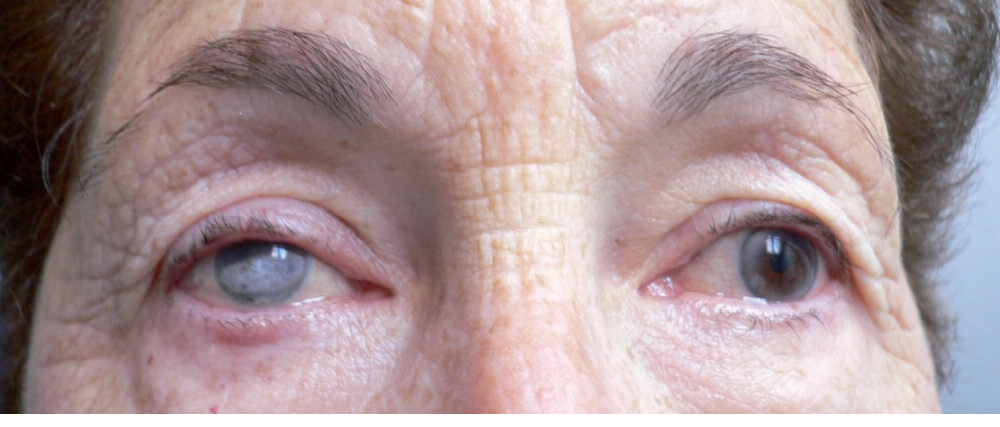 | Esthécolor with painted iris After |
Case #3 has traumatic cataract, partial aniridia with extensive corneal coverage and the presence of severe irregular astigmatism.
The choice fell on a rigid painted iris lens with optical pupil. The tests were carried out with a transparent lens with a diameter of 12.50 mm to avoid uncovering the cornea and nevertheless to maintain sufficient mobility.
The peripheral clearance is increased to improve the passage of tears, without introducing bubbles under the lens.
It is necessary to choose for these seeing eyes, a diameter of pupil sufficiently large to avoid photophobia.
This patient recovered an acuity of 9/10 with a power of +15.50 diopters and a wear of 10 hours per day.
| Rigid lens with painted iris on the left eye with optical pupil or black pupil of diameter 12.50mm and power + 15.50 D (Image 8) | 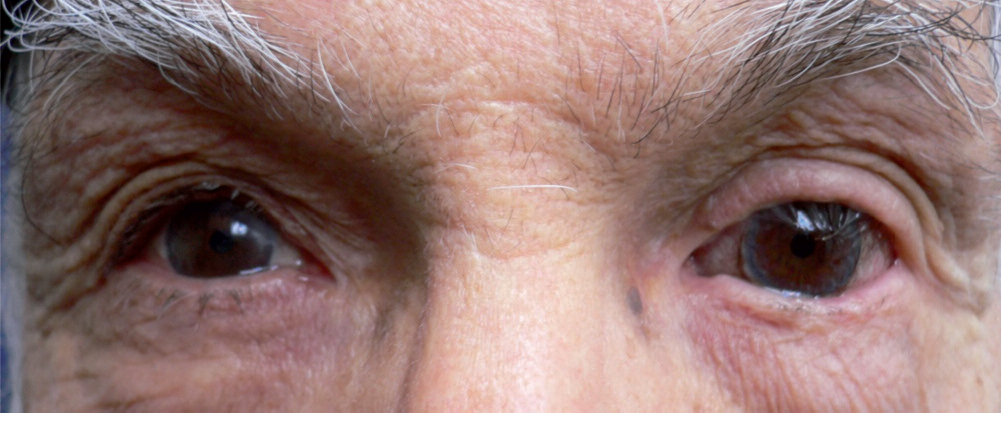 |
Prosthetic scleral lens with optic pupil or black pupil (Images 9 and 10)
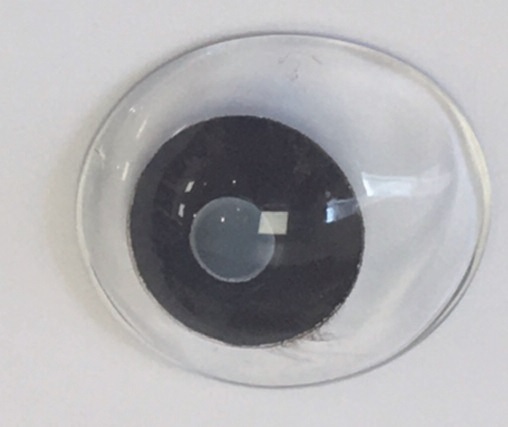
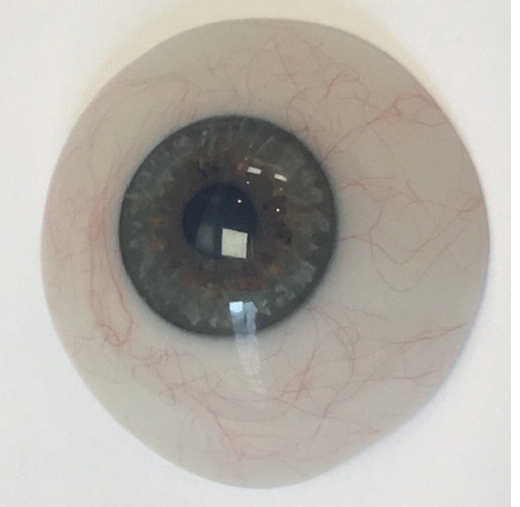
aesthetic soft scleral lens
In the case of a microphthalmia (atrophy of the eyeball) with a significant closure of the palpebral cleft, the placement of a prosthetic scleral lens is the most suitable equipment to restore the volume of the eyeball and force the opening of the eyeballs. eyelids to make it identical to the adelphe eye. The scleral glass can be produced either with a transparent sclera, or white with the presence or absence of vessels depending on the case studied.
And one of the advantages of prosthetic scleral glass is the masking of an eso- or exotropic deviation.
Case #4 has already been fitted since 2002 with a frequently replaced colored lens with very poor results.
The diseased eye is whitish and the lens worn has a transparent pupil.
In 2013, we fitted this patient with a brown colored lens and black pupil, equipment worn since and renewed several times.
This time around, we could talk about equipment more suited to the morphology of the eye, which still presents a slight convergent strabismus and a more pronounced ptosis of the upper eyelid.
After molding and fitting a transparent scleral lens, progressive and prolonged trials have shown excellent tolerance and wear for 14 hours per day. The custom-made iris could be integrated into the lens and Madame G. regained an alignment of the visual axes and an opening of the eyelids similar to the healthy eye.
Case #5 has been equipped since 2017 with a DENCOTT realization with an aesthetic flexible scleral lens with Before, After realization
 |  |
Conclusion
The professional must have an objective approach to his patient's problem and encourage him to use one type of equipment rather than another. It is often necessary to proceed in stages.
However, the prosthetic scleral lens should not be offered for initial fitting if one already feels reluctance to use the colored lens. But surely after one or even two contact lens renewals, the "impressive" look of the glass can then be more easily accepted.
If prosthetic scleral glass equipment is not initially an option, the use of magnifying spectacle lenses can make a slight ptosis (the eyelid droop) or a slight microphthalmia more aesthetic ...
It is recommended that trauma patients wear a pair of glasses in addition to their lens equipment to "hide" the diseased eye and protect the healthy eye.
In rare cases, we will have to equip both eyes with the same lenses (albinism, photophobia…), but this equipment must be monitored and checked very regularly.
In all the cases observed, it is our duty to provide the most efficient equipment for these patients very affected by their disability and to try to give them a new self-esteem.
Nevertheless, it is important to explain from the start that they will not cover their initial eye but that we will get as close as possible to their color (absence of anterior chamber, fixed pupillary diameter) so as not to give birth too much hope and too much disappointment on arrival.
Aesthetic contact lens
ESTHECOLOR
Therapeutic soft lens with painted iris.
| Material | Hydrophilic | Ø | Power | Ro | THK Lens | THK painted film |
|---|---|---|---|---|---|---|
| HEMA | 48% | 15mm | +20 -20 | 8.50 8.70 8.90 9.00 9.20 9.40 | 18/100mm | 2/100mm |
| Iris | Ø 11.00 11.50 12.00 12.50 | |||||
| Black or optic pupil | Ø pupil from 2 to 6 mm by 0.5mm or to measure | |||||
Adaptation guide:
- No loan lens.
- Carry out a test with a K + 1.2mm Semi-screral lens.
- See mobility max. 0.5 to 1mm.
- Prefer flat power for all powers <+ 3 diopters.
- Daily wear.
Indications :
Aniridia, iridectomy, corneal cover, albinism, postoperative effects, photophobia, occlusion, diplopia, inoperable cataract.
Iris disfigured or deformed, cataract inoperable.
Pupil disfigured or deformed.
Common scar following an accident or illness.
Contreaindications :
- All conditions of the anterior segment of the eye.
- Dry eyes.
Manufacturing delays :
Three weeks.
Renewal :
Annual
Oxidizing products to be avoided.
Download our document in pdf format
Cosmetic lens
Reconstruction of the iris and lenses for albinism



